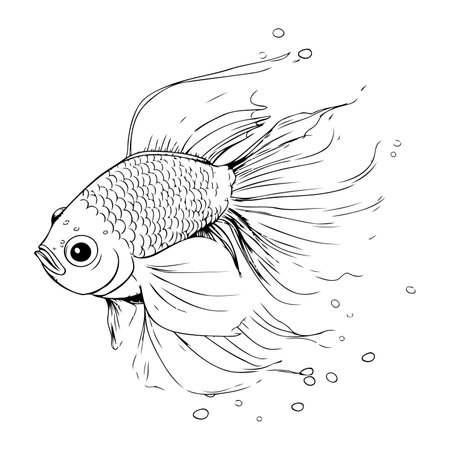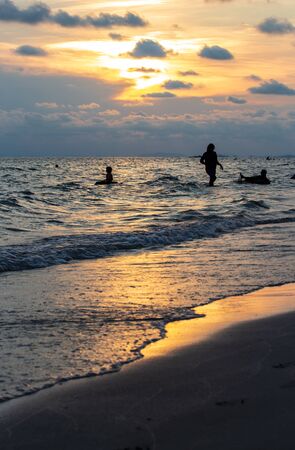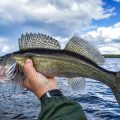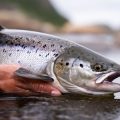1. Choosing the Right Topwater Lure for Summer Conditions
When summer heats up, bass and other predatory fish get aggressive near the surface, making it prime time for topwater lures. But not all topwater baits are created equal—each style has its moment to shine depending on weather, water clarity, and fish mood. Let’s break down the most popular types and when to tie one on.
Poppers
Poppers have a cupped face that throws water and makes a loud “pop” with every twitch of your rod tip. These are great early in the morning or late in the evening when the water is calm and you need to grab a fish’s attention. The splash and sound can trigger reaction bites from bass hanging near shallow cover or dock edges.
Frogs
Hollow-body frogs are perfect for fishing over thick mats of vegetation where other lures would get snagged. Summer heat brings out heavy weed growth, so frogs let you hop and pause over lily pads or hydrilla without worry. Bass lurking below love to ambush these baits, especially during midday when they’re hiding from the sun.
Walking Baits
Walking baits (like the Zara Spook) are designed for a side-to-side “walk-the-dog” retrieve. This zigzag action imitates a wounded baitfish skittering across open water. These work best on breezy days or when fish are spread out along points, flats, or open water near structure. Their subtle action can tempt pressured fish that ignore louder lures.
Prop Baits
Prop baits feature spinning blades at the front, rear, or both ends that churn up bubbles and make noise as you retrieve them steadily. They’re deadly around submerged wood, docks, or rocky shorelines in low light conditions. The commotion draws strikes from bass looking for an easy meal at dawn or dusk.
Quick Reference: When Each Topwater Lure Shines
| Lure Type | Best Conditions | Why Use It? |
|---|---|---|
| Poppers | Calm water, early/late hours | Loud pop draws attention; great around shallow cover |
| Frogs | Heavy weeds/mats, mid-day heat | Sneaks over thick cover; triggers ambush strikes |
| Walking Baits | Breezy/open water, scattered fish | Zigzag action mimics injured baitfish; covers water fast |
| Prop Baits | Low light, around structure | Noisy blades call in fish from distance; works well near obstacles |
Pro Tip:
If fish aren’t committing to your topwater lure, try changing size or color to better match local forage—or switch between styles until you dial in what gets the most blowups.
2. Prime Spots and Timing for Big Topwater Blowups
If you want to see those jaw-dropping topwater strikes this summer, you’ve got to fish smart. Knowing where and when to throw your lure can make all the difference. Here’s what you need to look for:
High-Percentage Summer Water
Fish are looking for comfort, food, and cover when the sun’s blazing. Let’s break down the hotspots:
| Spot Type | Why It Works | Best Time |
|---|---|---|
| Shade Lines | Predators use shade to ambush prey and escape the heat. Docks, overhanging trees, and boat houses are prime real estate. | Midday or anytime sun is high and shade is pronounced |
| Weed Mats & Lily Pads | Mats provide overhead cover, cooler temps, and hideouts for baitfish—perfect for explosive blowups. | All day, especially late morning through afternoon |
| Points & Drop-offs Near Shallows | Bass cruise these spots looking for easy meals as baitfish move in and out with changing light. | Dawn, dusk, and cloudy days |
| Pockets & Backwaters | Often overlooked, these areas warm up fast and hold bait—ideal for aggressive topwater action. | Early morning or just before sunset |
Low-Light Periods: Dawn & Dusk
The magic hours are no secret—dawn and dusk are hands-down the best times to get explosive strikes on a topwater lure. Why? Fish feel safe under low light, baitfish are more active near the surface, and predators have an edge on their prey. Set that alarm early or stay out late—these windows deliver results.
Quick Tips for Timing Your Casts
- Sunrise: Start casting as soon as you can see your lure on the water.
- Noon Heat: Target shaded areas or thick mats where fish hide from direct sunlight.
- Evening: As shadows grow long, fan-cast across shallows and weed edges.
- After Storms: Overcast skies extend feeding windows—don’t skip these opportunities!
Pro Tip: Stay Mobile!
If a spot looks perfect but isn’t producing after several casts, move on. Summer bass may roam fast, so cover water until you find active fish ready to blow up on your topwater presentation.

3. Must-Know Retrieval Tactics to Trigger Explosive Strikes
When it comes to topwater fishing in the heat of summer, your lure isn’t the only thing that matters—how you work it makes all the difference. Aggressive fish like largemouth bass, smallmouth, and even stripers are on the hunt, looking for an easy meal. The right retrieval can turn a curious look into a surface-smashing strike. Here’s how to match your retrieve to their summer mood:
Walking-the-Dog
This classic technique is a must-have in your topwater arsenal. With a side-to-side motion, you’ll make your bait zigzag across the surface, mimicking a wounded or fleeing baitfish. To nail this retrieve, cast out, point your rod tip down, and snap it with short pops while taking up slack line. This erratic action is irresistible to predatory fish in warm water.
Pro Tips for Walking-the-Dog:
- Use a slack line for maximum movement.
- Don’t rush—let the pauses sell the illusion of vulnerability.
- Try different speeds until you find what triggers strikes.
Stop-and-Go
If fish seem hesitant or are following but not committing, switch things up with a stop-and-go retrieve. This method involves reeling or twitching your lure, then letting it sit still for a moment before repeating. The pause gives fish time to lock in and attack.
How to Master Stop-and-Go:
- Twitch or reel 2-3 feet, then let the lure rest for 1-2 seconds.
- Vary the length of pauses—sometimes longer is better on hot days.
- Keep your eyes on the lure; strikes often happen during the pause!
Chugging and Popping
Baits like poppers or chuggers are built for making noise and splashing water. A series of sharp pops attracts fish from a distance, especially when they’re aggressive in summer months. Cast near structure, pop your lure so it spits water, and then let it settle before popping again.
Chugging Basics:
- Short, quick jerks create loud “bloops” that draw attention.
- Popping over weed beds or next to docks works great for big bass.
- Be ready—surface explosions can happen right after a loud pop!
Quick Reference Table: Topwater Retrieval Techniques
| Technique | Main Action | When to Use | Best Lure Types |
|---|---|---|---|
| Walking-the-Dog | Zigzag side-to-side | Active, chasing fish | Spooks, stickbaits |
| Stop-and-Go | Twitch-pause-repeat | Lethargic or cautious fish | Poppers, prop baits |
| Chugging/Popping | Loud pops & splashes | Aggressive feeders, low light | Poppers, chuggers |
Dialing In Your Retrieve for Summer Success
The key is observation: if bass are blowing up on fast-moving baits, speed up your retrieve. If they’re lazy or just nudging lures, slow it down and add more pauses. Don’t be afraid to experiment until you unlock what’s working that day. With these proven tactics in your playbook, you’re set to experience those heart-pounding topwater blowups all summer long!
4. Dialing in Gear for Topwater Success
If you want to make the most of summer’s explosive topwater action, your gear needs to be up for the job. The right rod, reel, and line setup can mean the difference between missing a blowup and landing a trophy bass. Let’s break down what works best for casting distance, lure control, and solid hooksets when fishing topwater lures.
Rod Selection: Length, Power, and Action
For topwater fishing, look for rods that are fast-action and medium to medium-heavy power. A longer rod (around 6’6” to 7’2”) lets you sling lures further across the water, which is key when covering big areas or reaching schooling fish. Fast action tips help you work baits with precise twitches but still have backbone for strong hooksets.
| Rod Length | Power | Action | Best Use |
|---|---|---|---|
| 66″ – 72″ | Medium/Medium-Heavy | Fast | Poppers, walkers, prop baits |
Reel Setup: Gear Ratio and Style
Baitcasting reels are the go-to for most American anglers targeting bass on topwater. They allow for quick line pickup and accurate casts—both essential when you need to cover water or react fast to a surface explosion. Look for reels with a gear ratio between 6.3:1 and 7.5:1 so you can pick up slack quickly after a strike or if your lure gets blown out of the water.
Recommended Reel Specs
- Baitcasting reel preferred
- Gear ratio: 6.3:1 to 7.5:1
- Smooth drag system (12-15 lb max drag)
Line Choices: Strength and Visibility
The right line is just as important as your rod and reel. Most pros stick with braid because it floats, has zero stretch (great for instant hooksets), and allows long-distance casting. For clear water or wary fish, add a short monofilament leader since mono also floats and has some shock absorption.
| Line Type | Pound Test | Benefits |
|---|---|---|
| Braided Main Line | 30-50 lb | No stretch, floats well, great casting distance |
| Mono Leader (optional) | 12-20 lb | Low visibility, some stretch for shock absorption |
Tuning Your Setup by Lure Type
- Poppers & Walking Baits: Medium rods for tip control; lighter braid for distance.
- Buzzbaits & Frogs: Medium-heavy rods; heavier braid (40-50 lb) for pulling fish from thick grass.
- Prop Baits & Wakebaits: Medium action with braid or mono depending on cover.
Pro Tip:
Avoid fluorocarbon main lines with topwater lures—they sink and mess up bait action!
Your Topwater Arsenal at a Glance:
| Lure Type | Rod Power/Action | Main Line/Lb Test | Best Reel Ratio |
|---|---|---|---|
| Poppers/Walkers | Medium/Fast | Braid 30-40 lb + Mono Leader 12-15 lb (optional) | 6.3:1+ |
| Frogs/Buzzbaits | Medium-Heavy/Fast | Braid 40-50 lb | 7.0:1+ |
| Prop/Wakebaits | Medium/Fast-Medium | Braid or Mono 30-40 lb | 6.3:1+ |
The right gear gives you better control over your lure’s action, helps you launch it farther, and boosts your chances of sticking that next monster blow-up—all summer long.
5. Reacting to Follows, Misses, and Short Strikes
When the summer heat is on and bass are smashing your topwater lures, it’s easy to get pumped and start making rookie mistakes. Knowing how to handle those adrenaline-filled moments—when a fish follows but doesn’t commit, misses the bait completely, or just nips at the tail—can mean the difference between going home with stories or just regrets. Here’s how you can keep your head in the game and turn those close calls into solid hookups.
Stay Cool Under Pressure
The first rule is simple: don’t freak out! When a fish explodes on your lure but doesn’t hook up, resist the urge to jerk your rod right away. Most of the time, an early hookset just pulls the bait out of the strike zone. Instead, take a deep breath and watch what happens next.
Common Topwater Reactions & Best Moves
| Fish Behavior | Your Response |
|---|---|
| Follow without striking | Pause or twitch the lure; try speeding up or slowing down retrieve |
| Missed blowup | Pause briefly, then give a few subtle twitches; wait for second strike |
| Short strike (tail grab) | Switch to a smaller lure or one with rear treble hooks; vary cadence |
Tactical Adjustments for More Hookups
- Change Up Your Retrieve: Sometimes all it takes is a little pause or an erratic twitch after a miss to trigger another strike. Bass often circle back if they think their prey is wounded.
- Downsize Your Lure: If you’re getting lots of short strikes, switch to a smaller topwater bait. Sometimes big lures spook pressured summer fish.
- Add Scent or Feathers: In heavily fished areas, adding a feathered treble hook or scent can make your lure more convincing during those close encounters.
Pro Tip: Double Down After a Miss
If you get a violent blowup but no hookup, cast right back to the same spot. Many times, that fish is still fired up and will hit again if you give it another shot quickly.
Keeping your cool and having a plan for every topwater scenario is key to turning almost-catches into brag-worthy fish this summer. With these strategies dialed in, you’ll be ready when the water explodes under your lure.
6. Safety and Conservation During the Summer Bite
Chasing explosive topwater strikes in the heat of summer is an absolute blast, but it also comes with a unique set of challenges for both anglers and fish. Keeping yourself safe and ensuring the fish stay healthy after release is just as important as landing that monster bass or feisty smallmouth. Here’s how to make sure you and your catch stay in top shape all summer long.
Angler Safety in the Summer Heat
The sun can be relentless during those prime topwater hours. Here’s a quick breakdown of key summer safety tips every angler should follow:
| Tip | Why It Matters |
|---|---|
| Stay Hydrated | Dehydration can sneak up fast—bring more water than you think you’ll need. |
| Wear Sun Protection | A wide-brim hat, polarized sunglasses, and SPF 30+ sunscreen help prevent burns and keep you comfortable. |
| Avoid Peak Heat | Fish early morning or late evening for cooler temps (and often better bites!). |
| Lightweight, Breathable Clothing | Long sleeves and pants made from moisture-wicking material protect skin without overheating. |
| Pace Yourself | Take breaks in the shade—don’t wait until you feel dizzy or fatigued. |
Smart Catch & Release: Keeping Fish Healthy
Summer water temps mean less oxygen for fish, so proper handling is crucial if you want to see them swim off strong. Here’s what to keep in mind during those heart-pounding topwater battles:
Quick Tips for Fish-Friendly Handling
- Minimize Air Time: Have your pliers ready and return fish to the water ASAP—aim for under 30 seconds out of water.
- Wet Your Hands: Before touching the fish, wet your hands to protect their slime coat (it’s like their armor).
- Use Rubber Nets: Mesh or rubber nets are gentler on fins and scales compared to old-school nylon.
- No Squeezing: Support the belly and avoid squeezing the gills or sides—especially important for bigger bass.
- Revive if Needed: Hold the fish upright in the water, gently moving it back and forth until it swims away strong.
Caring for Yourself and Your Catch: At-a-Glance Guide
| You | Your Fish |
|---|---|
| Sunscreen & hydration break every hour | Limit air exposure to under 30 seconds |
| Shade or cooling towel mid-morning/afternoon | Smooth, wet hands when handling fish |
| Pack a first aid kit (just in case) | Rubber net & quick hook removal tools ready |
If you’re targeting summer topwater action, remember: staying safe and keeping your catch healthy ensures you’ll be back out there making memories all season long!


